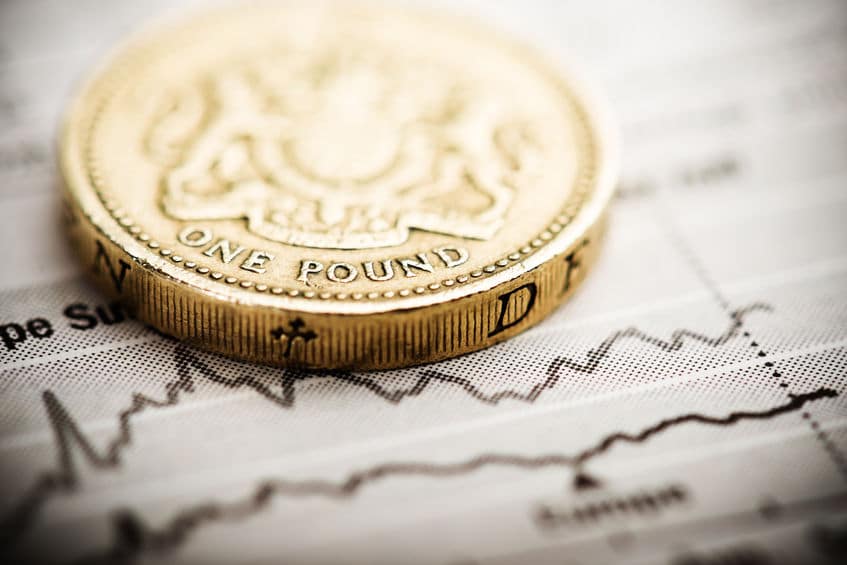Pound Holds Firm Ahead of BoE Decision, Euro Struggles, and Dollar Gains on Market Uncertainty

GBP
The British Pound is behaving like a safe-haven currency as markets react to the latest U.S. tariff announcements from President Trump.
While the U.S. Dollar is strengthening, the Pound is holding up well. This suggests that investors see the UK as less vulnerable to tariffs compared to major exporters like the Eurozone. The UK has a trade deficit with the U.S., meaning it imports more American goods than it exports. However, its direct exposure to U.S. tariffs is relatively low, with annual goods exports to the U.S. at $64 billion. The bigger risk for the UK is a slowdown in global economic growth and tighter financial conditions.
At the same time, investors are turning their attention to the Bank of England’s monetary policy decision on Thursday. Markets widely expect the BoE to cut interest rates by 25 basis points to 4.50%, with seven of the nine Monetary Policy Committee members likely to vote in favour. Policymaker Catherine Mann, known for her hawkish stance, is expected to be among the two who prefer to keep rates unchanged.
Expectations of a rate cut have grown due to easing inflation and signs of weakening labour demand. Core inflation slowed to 3.2% in December, while job growth in the three months to November was modest, with 35,000 new jobs added as businesses became cautious following an increase in employer National Insurance contributions.
Revised UK manufacturing data also points to a stabilising economy, with the S&P Global/CIPS Manufacturing PMI at 50.1. However, with an interest rate cut now largely priced in, the Pound is likely to come under pressure, especially if the BoE signals further easing ahead.
EUR
The European Central Bank (ECB) cut interest rates by 25 basis points last week, bringing them down to 2.75%—the lowest level in nearly two years. The move was widely expected, and ECB President Christine Lagarde acknowledged that the Eurozone economy remains weak in the short term, with risks still tilted to the downside. However, she suggested a recovery could take shape later in the year.
Preliminary data showed that Eurozone GDP was flat in the fourth quarter of 2024, missing expectations of 0.1% growth. Germany, the bloc’s largest economy, shrank by 0.2%, adding to concerns about the region’s economic outlook.
Wells Fargo has warned that there are downside risks to its already modest 2025 Eurozone growth forecast of 0.9%. While inflation pressures remain, the ECB is expected to continue easing policy to support the economy.
The Pound to Euro exchange rate opened the week at 1.2011, rising from Friday’s close of 1.1964 and touching a high of 1.2032. It is a quiet week for Eurozone data, with Retail Sales on Thursday being the only key release to watch.
USD
The US Dollar is gaining strength as market sentiment turns negative, with investors seeking safety in the Greenback. The US Dollar Index (DXY), which measures the Dollar’s value against six major currencies, has surged past 109.50—the highest level in over two weeks.
Over the weekend, President Trump imposed 25% tariffs on Canada and Mexico and 10% on China. He had already warned of higher tariffs on North American countries over concerns about illegal immigration and fentanyl. While he also threatened Europe with tariffs, he took a softer stance on the UK, saying he was confident a deal could be reached with Prime Minister Keir Starmer.
This week, investors will be closely watching US labour market data, as it could influence expectations on how long the Federal Reserve will keep interest rates steady. Following last Wednesday’s Fed meeting, where rates were left unchanged at 4.25%-4.50%, Chair Jerome Powell made it clear that any rate cuts would depend on either a significant drop in inflation or signs of a weaker job market.
On Monday, attention will turn to US manufacturing data, with the ISM Manufacturing PMI expected to rise slightly to 49.5 from 49.3 in December. While this would indicate a slower pace of contraction, the reading remains below 50.0, meaning the sector is still shrinking.
We specialise in helping businesses and individuals mitigate foreign exchange risks by providing insights, guidance and tailored strategies. If you have upcoming currency requirements and want to have a conversation about how we can help you, contact one of our consultants on 020 3876 5432.